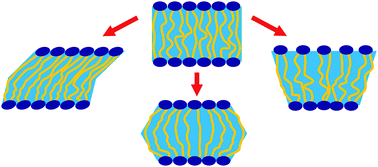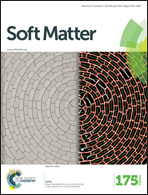Elastic deformations of bolalipid membranes
Abstract
Archaeal membranes have unique mechanical properties that enable these organisms to survive under extremely aggressive environmental conditions. The so-called bolalipids contribute to this exceptional stability. They have two polar heads joined by two hydrocarbon chains. The two headgroups can face different sides of the membrane (O-shape conformation) or the same side (U-shape conformation). We have developed an elasticity theory for bolalipid membranes and show that the energetic contributions of (i) tilt deformations, (ii) area compression/stretching deformations, (iii) as well as those of Gaussian splay from the two membrane surfaces are additive, while splay deformations yield a cross-term. The presence of a small fraction of U-shaped molecules resulted in spontaneous membrane curvature. We estimated the tilt modulus to be approximately equal to that of membranes in eukaryotic cells. In contrast to conventional lipids, the bolalipid membrane possesses two splay moduli, one of which is estimated to be an order of magnitude larger than that of conventional lipids. The projected values of elastic moduli act to hamper pore formation and to decelerate membrane fusion and fission.

- This article is part of the themed collection: Open access articles from Soft Matter

 Please wait while we load your content...
Please wait while we load your content...